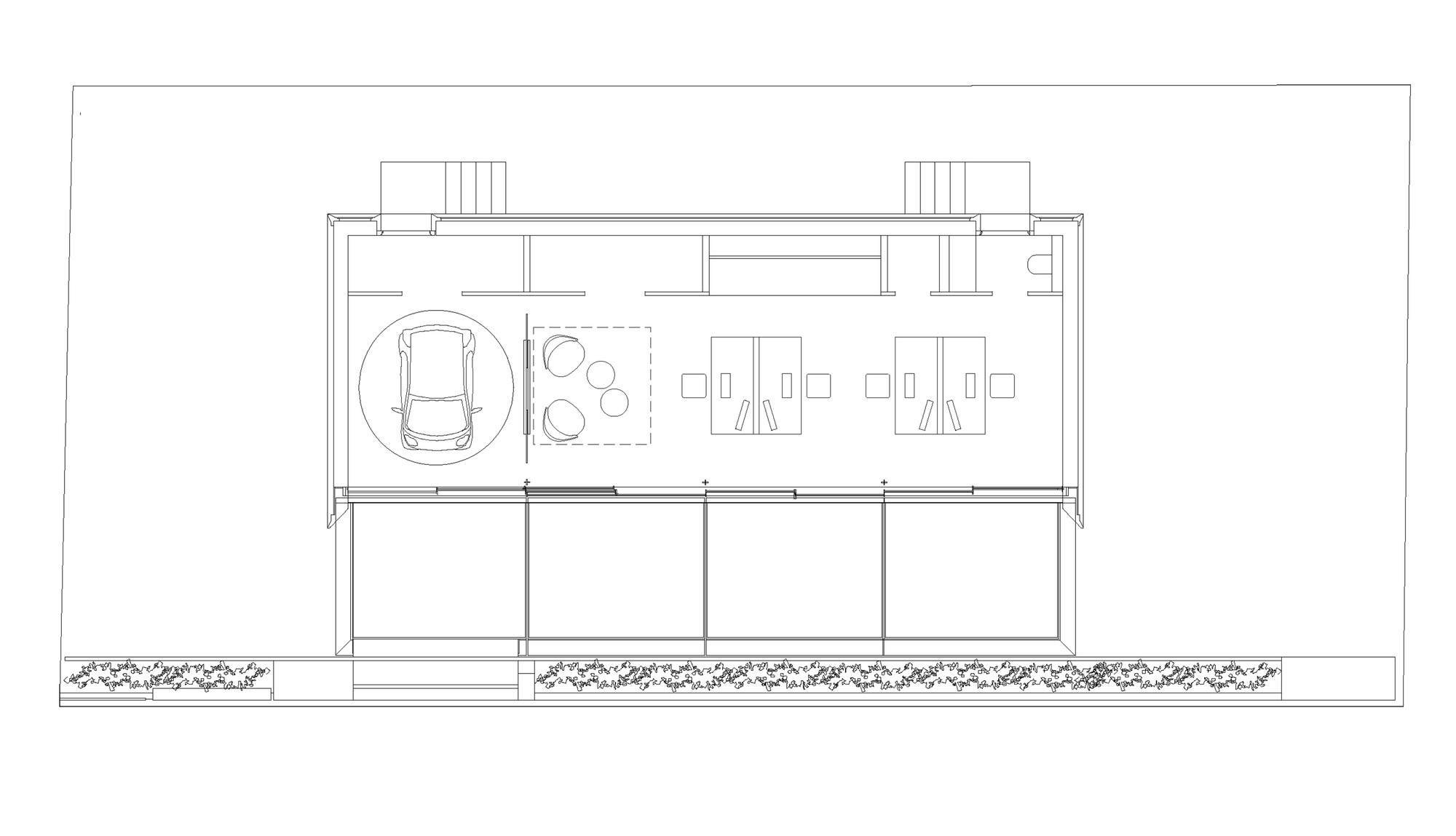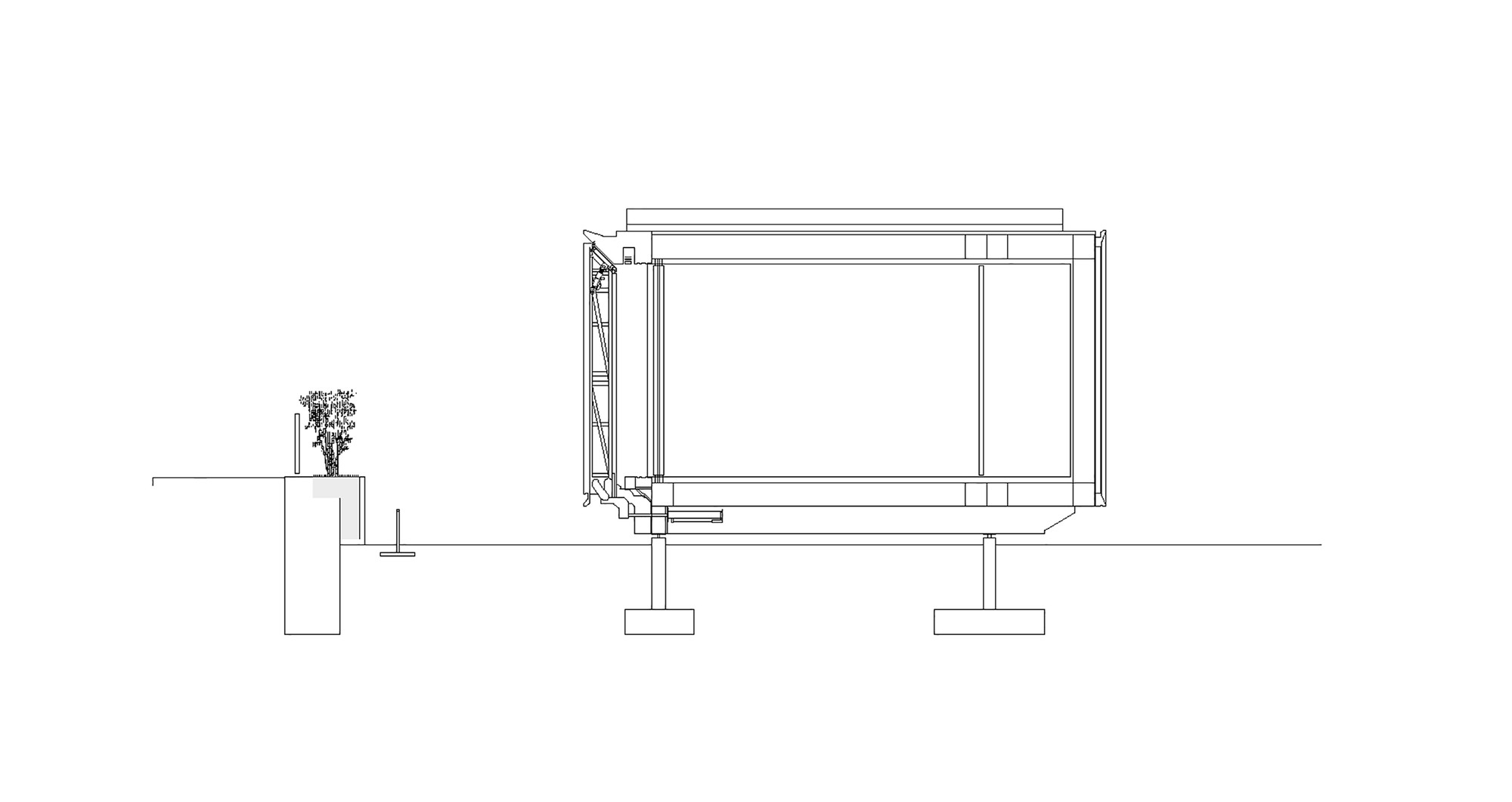Active House B10 is a perfect example of contemporary, sustainable architecture. It was completed in 2014 by the Werner Sobek Group, and it is located in Stuttgart, Germany. As with many other homes designed by Werner Sobek, this residence qualifies for the Triple Zero standard, which means that it is able to produce more energy than it actually needs, it can be recycled without leaving behind any waste and produces absolutely no emissions.
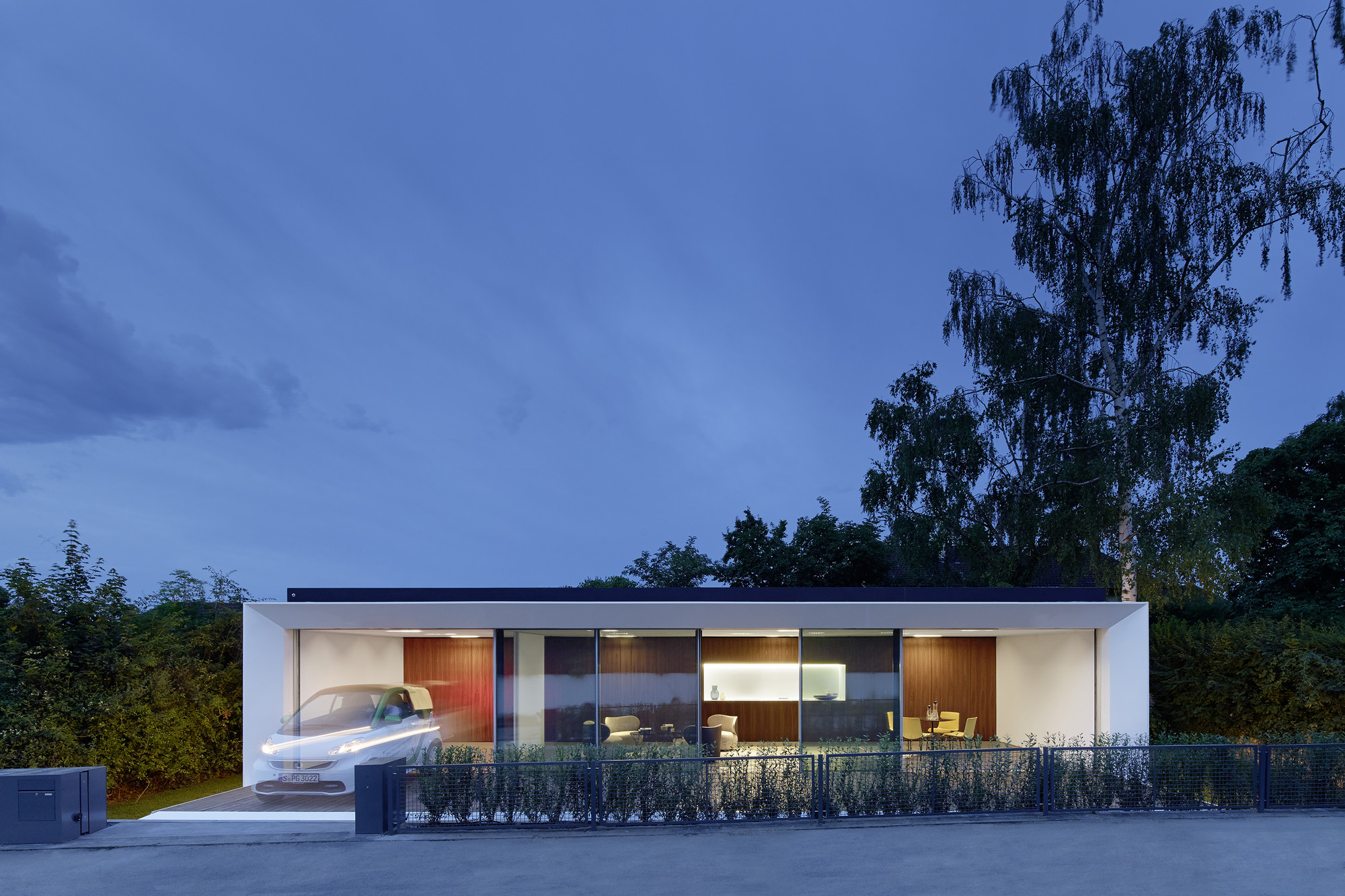
The project was prefabricated in a few months and required a single day to be assembled on site. It features 17 mm thick vacuum glazing as well as fold-down facade elements that can be transformed into a patio. Since the house is able to generate more energy than it needs to function, it can also power a pair of electric cars as well as a neighboring residence. Throughout its existence, the abode will be monitored and scientifically evaluated at the Institute for Lightweight Structures and Conceptual Design, which is a part of the University of Stuttgart.
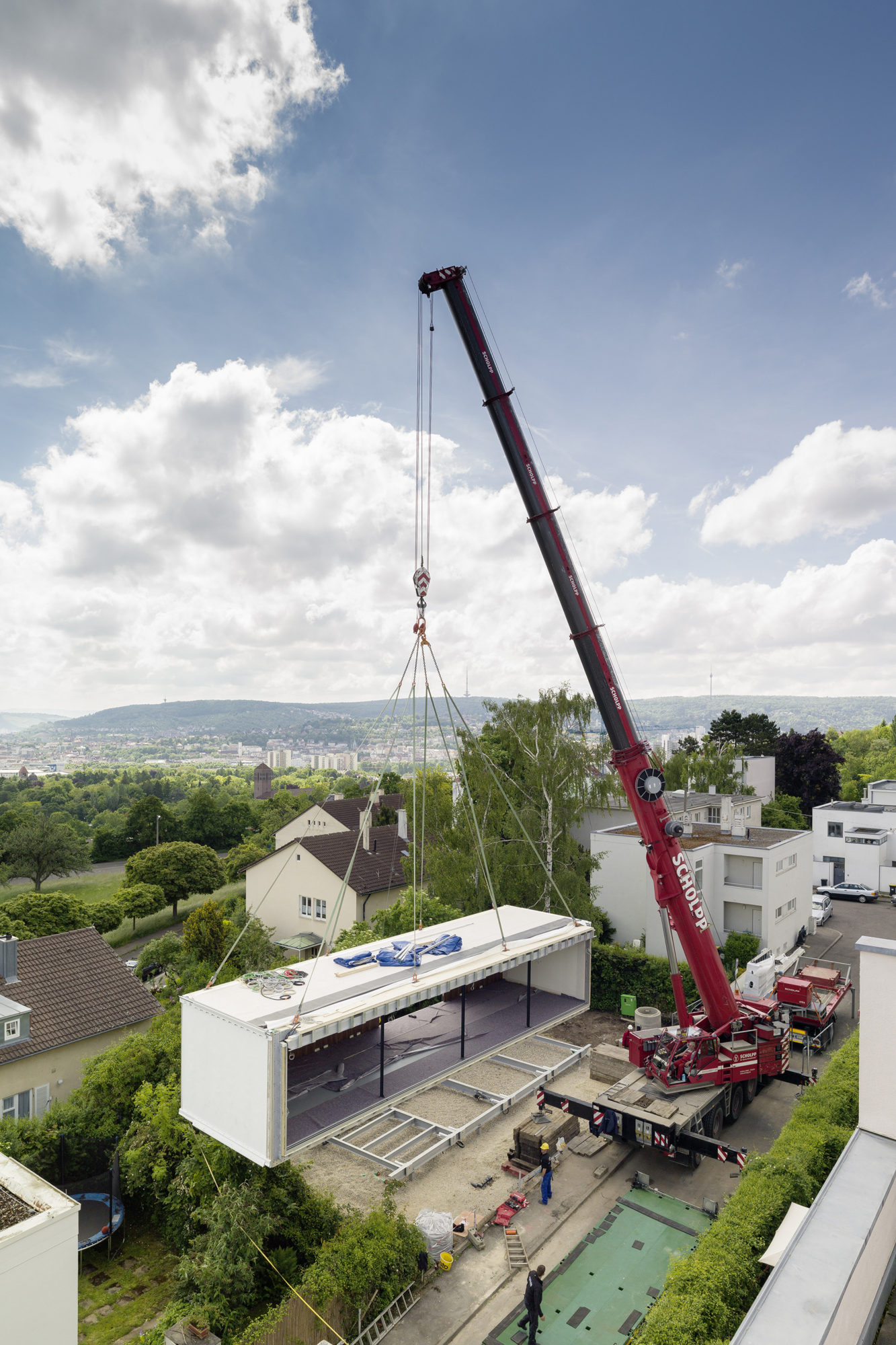
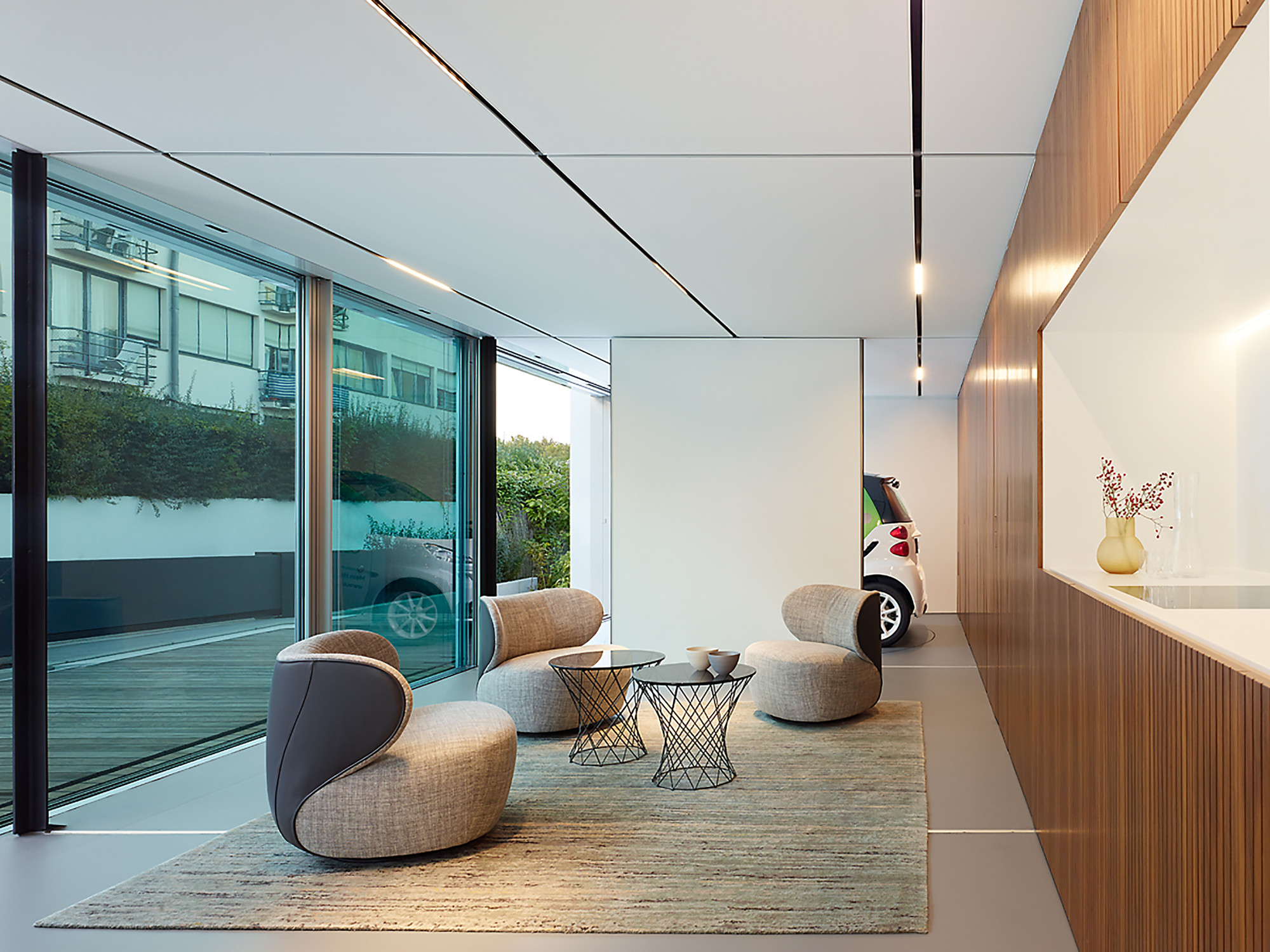
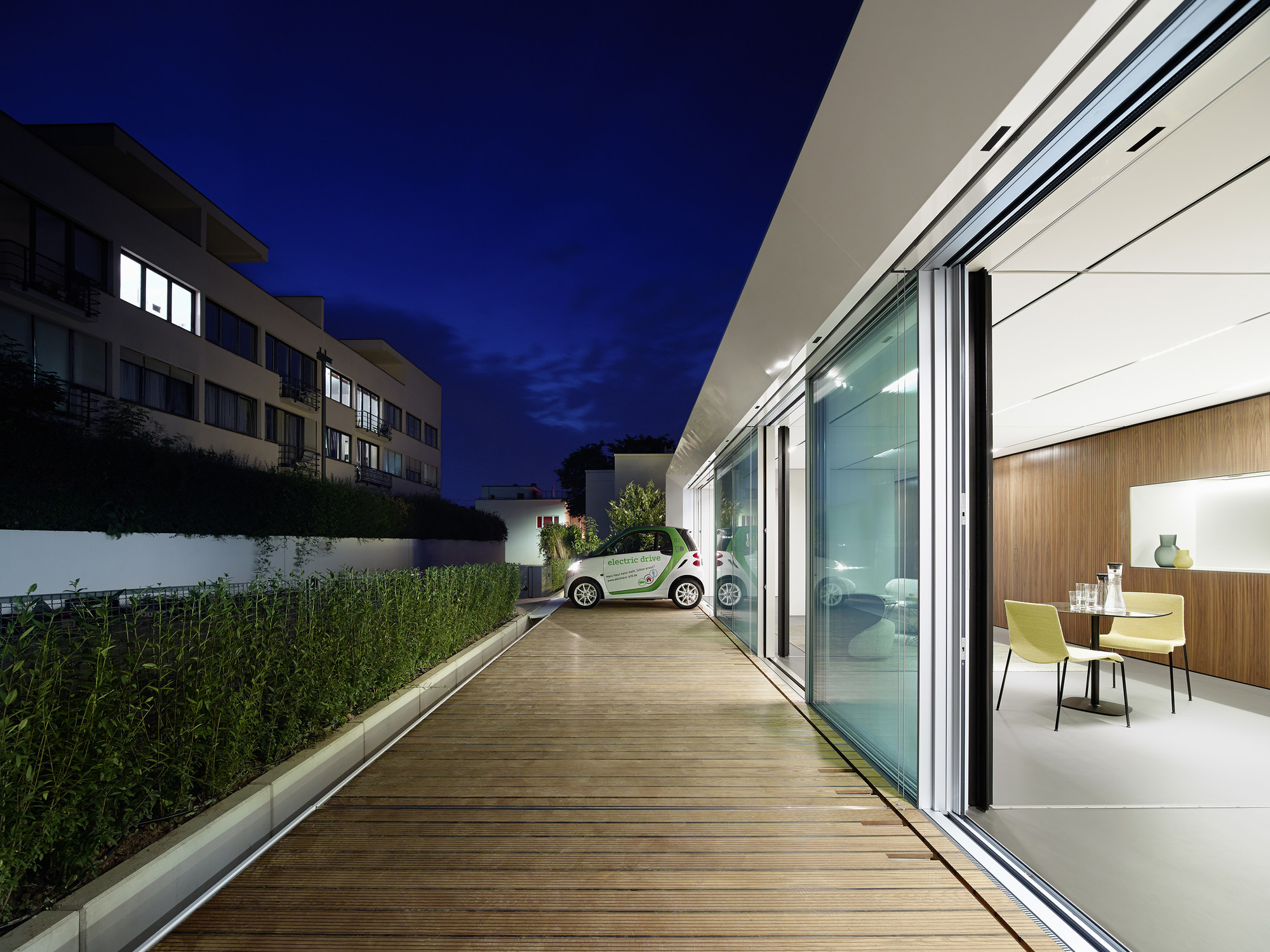
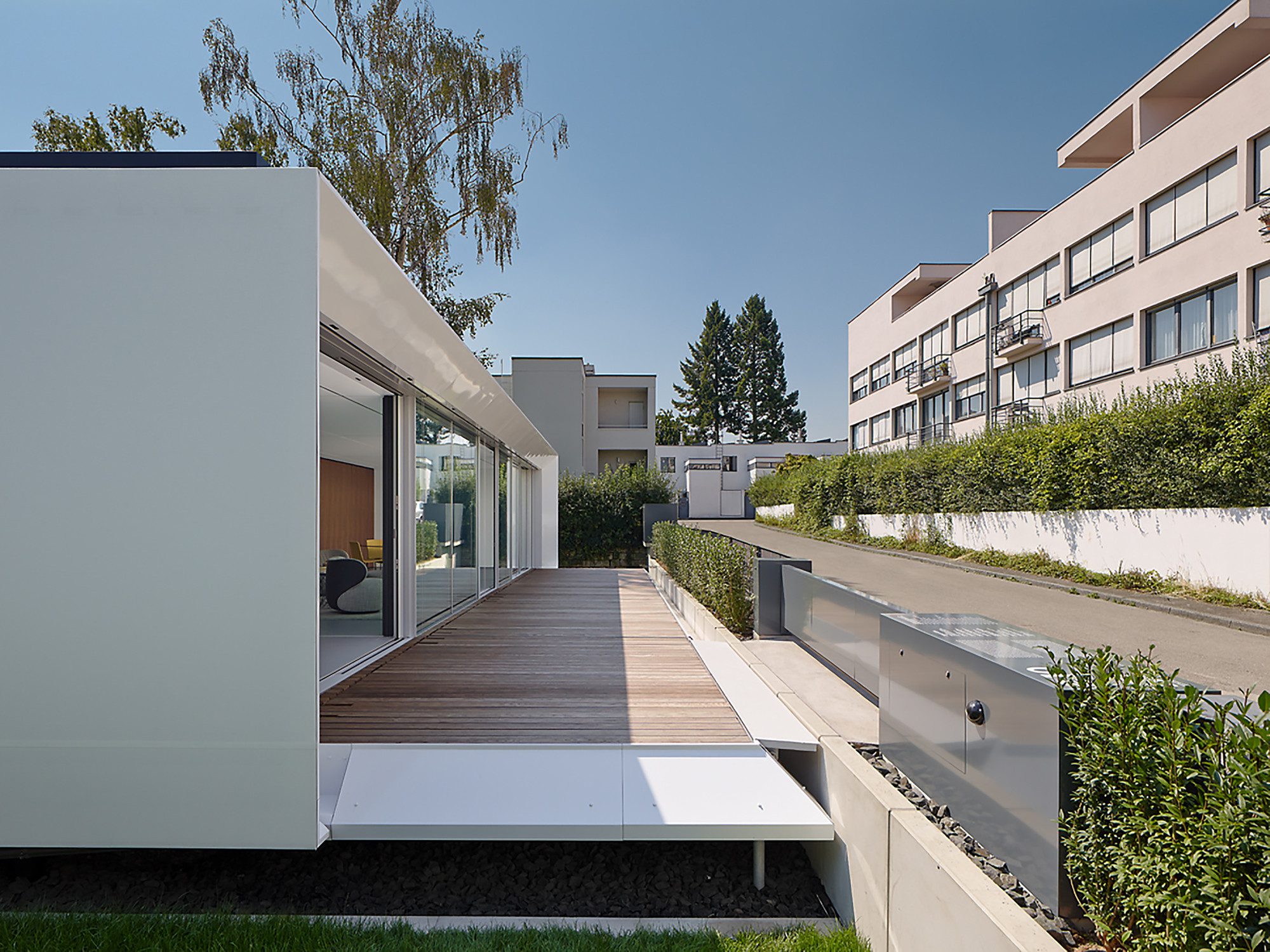

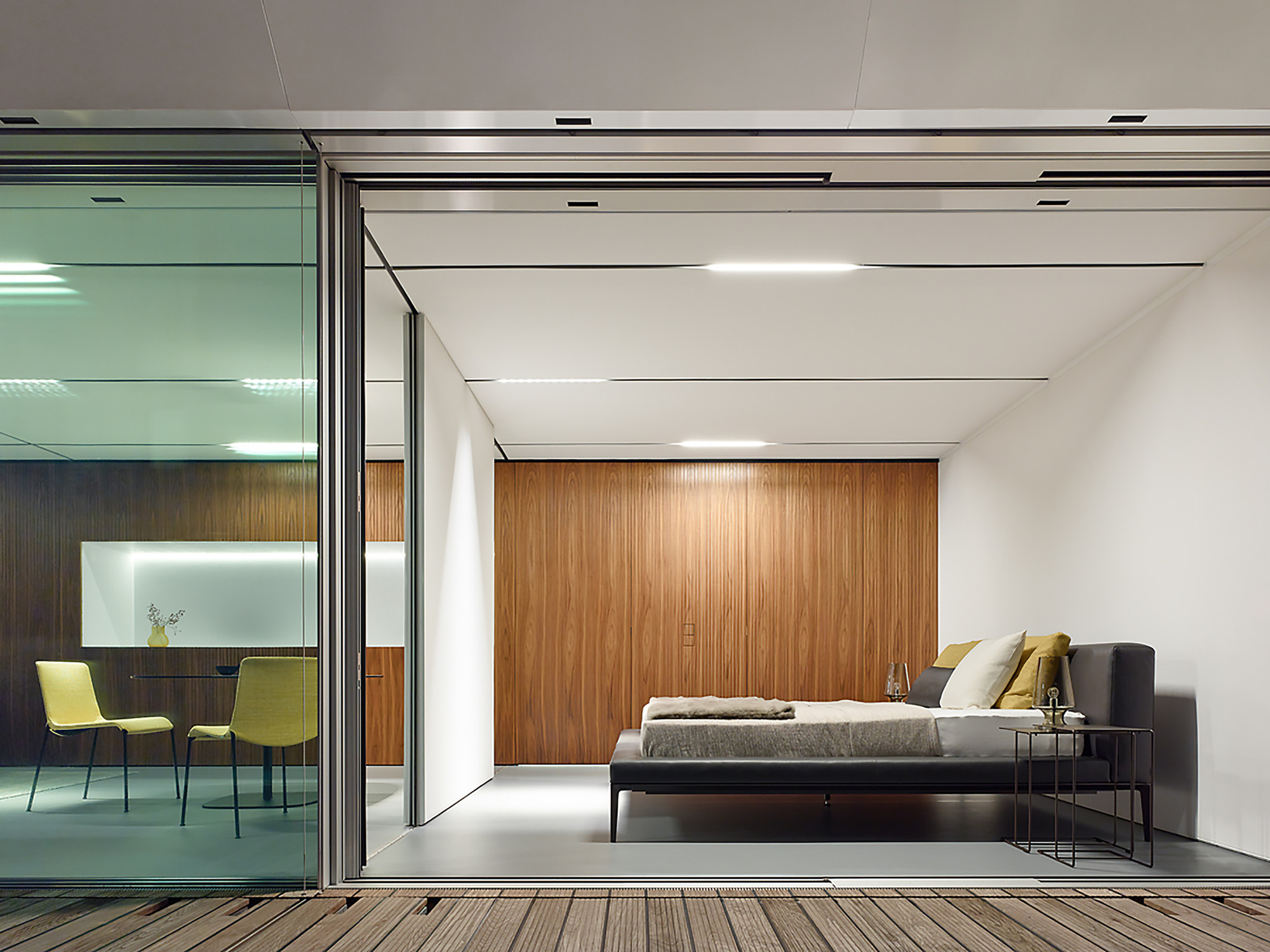
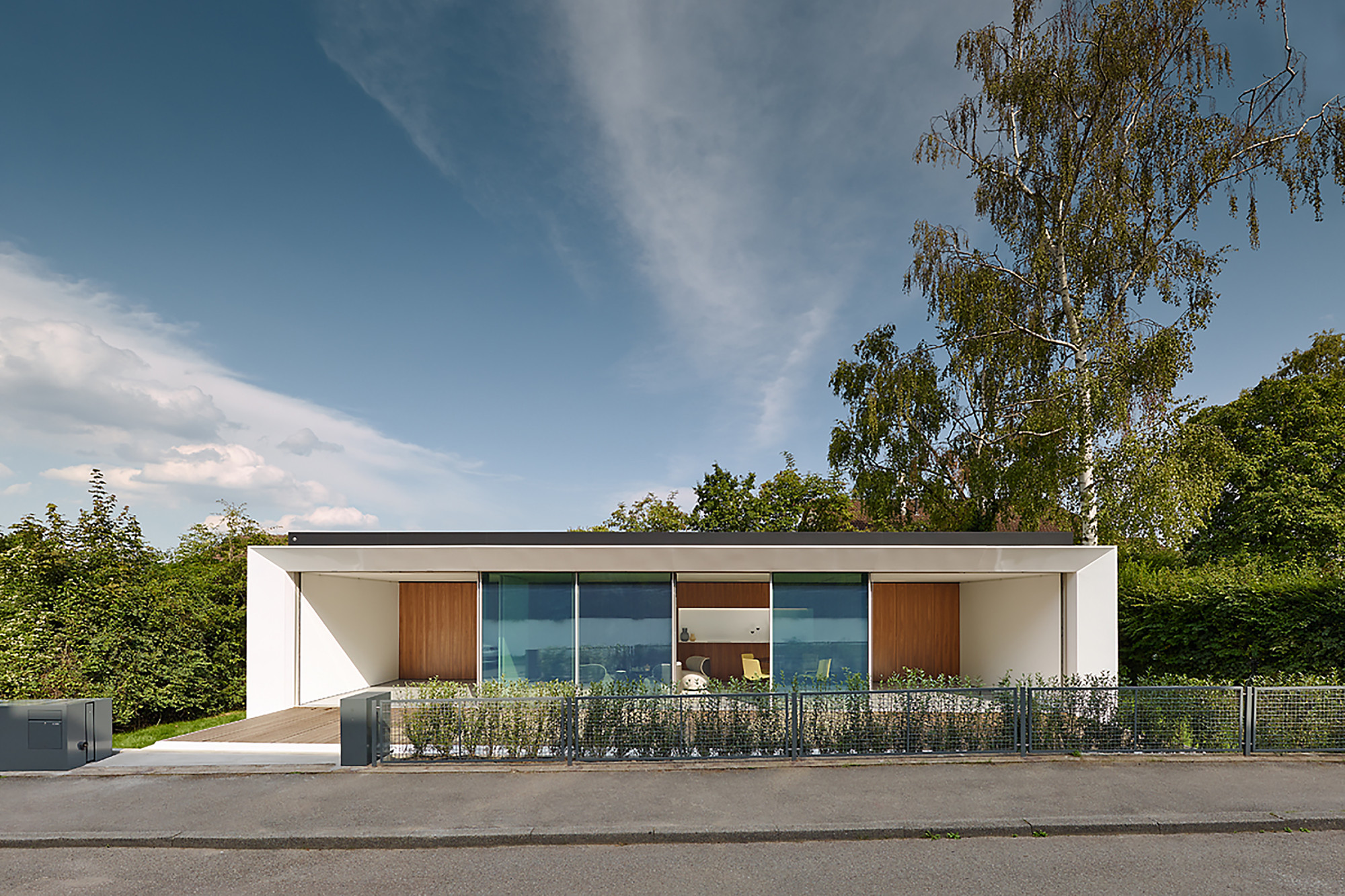
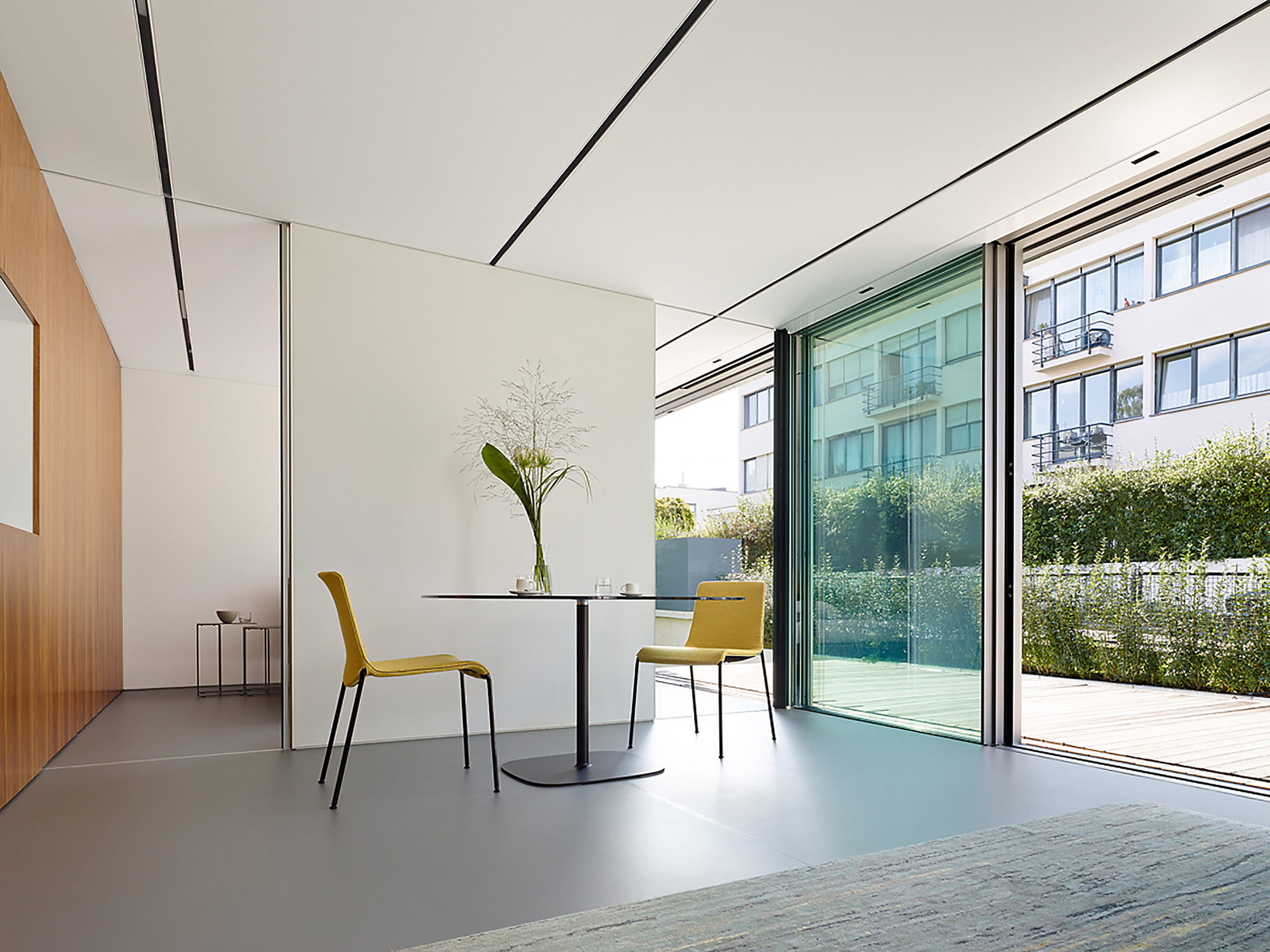
From the architect:
Active House B10 is part of a research project examining how innovative materials, structural designs and technologies can improve our built-up world in a sustainable manner. Thanks to a sophisticated energy concept and a predictive, self-learning building control system the house generates twice as much energy from sustainable resources as it actually requires for its own needs.
The surplus energy is used to power two electric cars and – utilizing smart grid technology – the neighbouring house built by the architect Le Corbusier (home to the Weissenhof Museum since 2006). Combining mobile and permanent infrastructures is an extremely promising approach towards achieving an integrated and decentralized power supply to serve the needs of both electro-mobility and the built-up environment.
Throughout the entire life of the project the consumption and generation of energy as well as a large spectrum of data relevant to building research will be measured on a continual basis and scientifically evaluated at the Institute for Lightweight Structures and Conceptual Design (ILEK) of the University of Stuttgart.
B10 is part of a network of projects known as “Shop window LivingLab BWe mobile”, in which some 40 projects are being promoted in the Stuttgart and Karlsruhe regions. The project is supported by the Federal Ministry of Transport and Digital Infrastructure in Berlin. The state capital Stuttgart has made available property belonging to the city for a period of three years to allow the project to be implemented.
The building plot is located in Bruckmannweg 10, which is in the heart of Stuttgart’s famous Weissenhof Estate. In the 1920s the estate was a ground-breaking signal for essential improvements to our built-up environment. Located on the Killesberg hills Active House B10 is following the innovative character of the estate and transferring it to new realms – where real-estate and mobility are considered and designed as an integral unit.
B10 dovetails the energy systems of electro-mobility solutions and buildings to an overarching integral control system. As a consequence, it combines the charging infrastructure and the building services equipment to generate, store and manage energy in a central element – that in turn makes B10 the link between the user, building, vehicle and the smart grid.
As well as its energy efficiency the building offers important design innovations. B10 was planned and industrially prefabricated within a few months. It was then assembled on-site in just a day. The diverse constructive innovations of the building include, for example, the use of just 17 mm thick vacuum glazing in the form of a storey-high glazed front. Other important innovations include the installation of a prefabricated technology rack with a central cable harness, fold-down facade elements (that fulfil a dual function as a patio), a fully recyclable timber-and-textile wall construction et cetera.
As is the case with all research buildings designed by Werner Sobek, B10 requires a minimum of resources and is completely recyclable. As a consequence, it fulfils all of the requirements demanded by the Triple Zero standard: the building generates more energy than it needs itself (zero energy), it does not produce any emissions whatsoever (zero emissions) and it can be returned to the materials cycle without leaving behind any residual waste (zero waste).
Architects: Werner Sobek Group
Location: Bruckmannweg 10, 70191 Stuttgart, Germany
Project Year: 2014
Photographs: Zooey Braun
General planning: Werner Sobek Design GmbH
Energy concept: WSGreenTechnologies GmbH
Building construction: SchwörerHaus
Building control + energy management: alphaEOS AG
